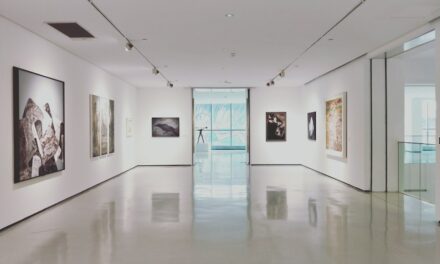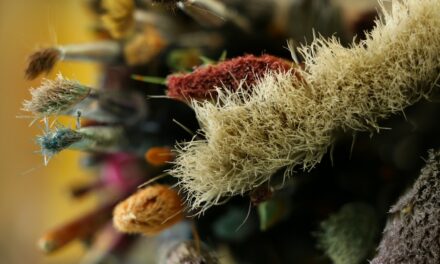In the realm of visual art, the pursuit of hyper-detailed textures has become a hallmark of contemporary realism. Artists today strive to capture the intricate details of their subjects, whether they be the delicate scales of a reptile, the soft fur of an animal, or the nuanced tones of human skin. This meticulous attention to detail not only enhances the visual appeal of a piece but also invites viewers to engage more deeply with the artwork.
Hyper-detailed textures can evoke a sense of realism that transcends mere representation, allowing the audience to experience the subject almost tangibly. The fascination with hyper-detailed textures is rooted in our innate desire to observe and understand the world around us. Artists who master these techniques often find themselves exploring the boundaries between reality and illusion.
The process of creating such textures requires not only technical skill but also a profound understanding of light, form, and colour. As we delve into the various aspects of painting hyper-detailed textures, we will uncover the techniques and tools that can elevate an artist’s work from the ordinary to the extraordinary.
Summary
- Hyper-detailed textures add depth and realism to paintings, bringing them to life.
- Mastering scales is crucial for realistic reptile skin textures, using techniques such as layering and blending.
- Creating hyper-detailed animal fur requires attention to detail and the use of specific tools and materials.
- Perfecting human skin textures involves careful blending and layering techniques to achieve a hyper-realistic portrayal.
- Tools and materials such as fine brushes, high-quality paints, and textured surfaces are essential for painting hyper-detailed textures.
Mastering Scales: Techniques for Realistic Reptile Skin
Observation is Key
The first step in mastering this art form is to study real reptiles closely. Observing their skin under different lighting conditions can reveal how light interacts with their scales, creating highlights and shadows that are essential for realism.
Replicating Scales on Canvas
Artists should take note of the varying sizes and shapes of scales, as well as the subtle colour variations that can occur across different species. To replicate these features on canvas, artists often employ a combination of fine brushes and layering techniques. Starting with a base layer that establishes the overall colour and tone is crucial.
Building Up Layers of Detail
Once this foundation is laid, artists can begin to build up layers of detail using smaller brushes or even tools like sponges for texture. Dry brushing techniques can also be effective in creating the illusion of raised scales, while glazes can add depth and richness to the colours. The key is to remain patient and methodical, allowing each layer to dry before adding further details, thus ensuring a realistic representation of reptilian skin.
Creating Realistic Fur: Tips and Tricks for Hyper-Detailed Animal Textures
Fur presents its own set of challenges when it comes to hyper-detailed representation. The softness and complexity of fur require artists to adopt a different approach than that used for scales. To achieve a lifelike portrayal, one must consider not only the colour and pattern but also the way light interacts with each strand.
Observing animals in natural light can provide invaluable insights into how fur reflects and absorbs light, revealing highlights and shadows that contribute to its three-dimensionality. One effective technique for painting fur is to use a stippling method with a fine brush or even a palette knife. This allows for the creation of individual strands that can mimic the natural flow and direction of fur.
Layering is again essential; starting with a base colour and gradually adding darker and lighter tones can create depth and realism. Additionally, incorporating subtle variations in colour—such as hints of brown or grey within a predominantly black coat—can enhance the authenticity of the fur. Artists should also pay attention to the direction in which they paint; following the natural growth pattern of the fur will result in a more believable texture.
Perfecting Human Skin: Hyper-Realistic Portrayal of Skin Textures
The portrayal of human skin is perhaps one of the most challenging aspects of hyper-realistic painting. Skin is not merely a flat surface; it is a complex interplay of tones, textures, and imperfections that tell a story about age, health, and emotion. To achieve a hyper-realistic effect, artists must develop an acute awareness of these subtleties.
Studying photographs or live models under various lighting conditions can help artists understand how skin behaves in different environments. A successful approach to painting skin involves layering translucent glazes to build up depth and richness. Starting with an underpainting that captures the basic shapes and values is crucial before moving on to more detailed work.
Artists often use a combination of warm and cool tones to reflect the natural variations found in human skin. Techniques such as scumbling—where a dry brush is used to apply a thin layer of paint—can create texture that mimics pores and fine lines.
Tools and Materials for Painting Hyper-Detailed Textures
The right tools and materials are essential for achieving hyper-detailed textures in painting. Artists typically rely on a variety of brushes, each serving a specific purpose in their quest for detail. Fine-tipped brushes are indispensable for intricate work, while larger brushes can be used for broader strokes and background work.
Additionally, palette knives can be employed for creating texture or mixing colours directly on the canvas. In terms of materials, high-quality paints are crucial for achieving vibrant colours and smooth application. Acrylics, oils, and watercolours each have their unique properties that can affect texture; for instance, oils allow for longer blending times while acrylics dry quickly, necessitating different techniques.
Canvas or wood panels provide a sturdy surface for detailed work, but artists may also experiment with textured papers or boards to add an additional layer of interest to their pieces. Ultimately, selecting the right combination of tools and materials can significantly impact an artist’s ability to create hyper-detailed textures.
Blending and Layering Techniques for Hyper-Detailed Textures
Blending and layering are fundamental techniques in achieving hyper-detailed textures. The process begins with establishing a solid foundation through careful layering; this involves applying multiple thin layers of paint rather than one thick application. This method allows for greater control over colour transitions and depth, which is particularly important when rendering complex textures like skin or fur.
Blending techniques vary depending on the medium used. For instance, oil paints can be blended smoothly due to their slow drying time, allowing artists to manipulate colours seamlessly on the canvas. In contrast, acrylics require quicker techniques such as wet-on-wet blending or using a spray bottle to keep layers moist while working.
Regardless of the medium, artists should focus on creating smooth transitions between colours while maintaining distinct areas of detail.
Adding Depth and Dimension to Hyper-Detailed Textures
To truly capture hyper-detailed textures, artists must consider how depth and dimension play into their work. This involves not only understanding light and shadow but also employing techniques that create a three-dimensional effect on a two-dimensional surface. One effective method is to use contrasting values; by placing lighter tones next to darker ones, artists can create an illusion of depth that draws viewers into the artwork.
Another technique involves using impasto—a method where paint is applied thickly to create raised areas on the canvas. This can be particularly effective for textures like scales or fur, where physical texture enhances visual interest. Additionally, artists may incorporate glazes or varnishes to add sheen or reflectivity, further enhancing the dimensionality of their work.
By thoughtfully considering how depth interacts with texture, artists can elevate their pieces from mere representations to immersive experiences.
Troubleshooting Common Challenges in Painting Hyper-Detailed Textures
Despite careful planning and execution, artists may encounter challenges when attempting to paint hyper-detailed textures. One common issue is achieving realistic colour representation; colours may appear flat or lifeless if not layered correctly. To combat this, artists should continually assess their work under different lighting conditions and adjust their palette accordingly.
Another challenge lies in maintaining consistency across different areas of texture; for instance, ensuring that fur appears cohesive throughout an animal’s body can be difficult. To address this, artists should take breaks during their work sessions to step back and evaluate their progress from a distance. This perspective can help identify areas that require more attention or adjustment.
Ultimately, persistence and practice are key; as artists continue to refine their techniques, they will find themselves better equipped to tackle the complexities of hyper-detailed textures with confidence and skill. In conclusion, mastering hyper-detailed textures requires dedication, observation, and practice across various subjects—from reptile skin to human features. By employing effective techniques in blending, layering, and using appropriate tools, artists can create stunningly realistic representations that captivate viewers’ attention.
As they navigate common challenges along the way, they will undoubtedly grow in their artistic journey, pushing the boundaries of what is possible in hyper-realistic art.
If you are interested in exploring more whimsical creations, you should definitely check out the article Whimsical Creations. This article delves into the world of artful adventures and showcases unique and imaginative artworks that will surely inspire you. From chalk bombing to flash mob art, spontaneous urban creation is celebrated in Chalk Bombing and Flash Mob Art: Spontaneous Urban Creation. These articles provide a diverse range of artistic inspiration that complements the hyper-detailed textures discussed in the article on scales, fur, and skin painting.


